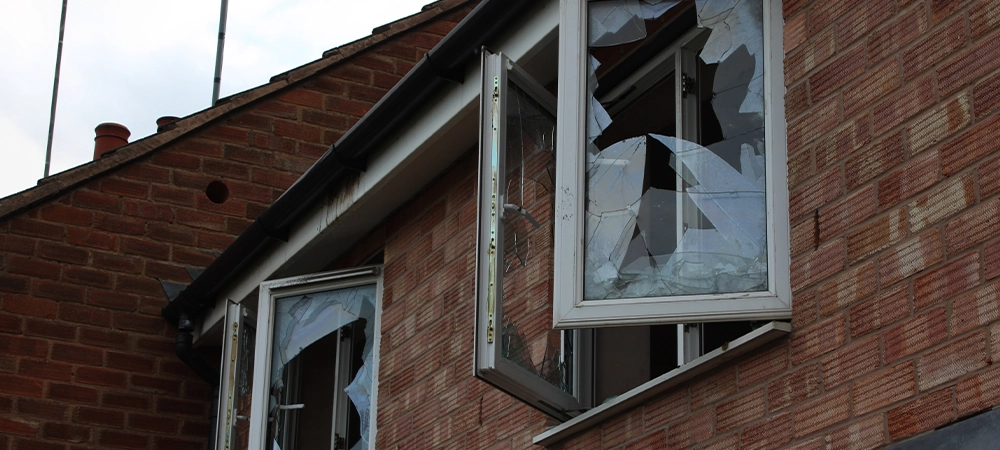Criminal mischief is a term that can sound vague, as it covers a wide range of offences. Examples can include spray-painting a wall, smashing someone’s phone, or cutting off their electricity. In simple terms, it is damaging or interfering with someone’s property.
With such a wide range of actions covered under this law, it can be hard to know what counts as mischief and what the punishments may be. Read on as we take a closer look at criminal mischief in Ontario.
Defining Criminal Mischief in Ontario
Criminal mischief is under Section 430 of the Criminal Code in Canada. It’s a law that applies to all provinces and territories in the country, including Ontario. The law states that criminal mischief is committed when you:
- Destroy or damage property
- Render property dangerous, useless, inoperable or ineffective
- Obstruct, interrupt, or interfere with the lawful use, enjoyment, or operation of property
- Obstruct, interrupt, or interfere with any person in the lawful use, enjoyment, or operation of the property
This can be summarized by saying mischief is about damaging or interfering with something that doesn’t belong to you. It also includes preventing others from using property they are entitled to use.
Common Examples of Criminal Mischief
As criminal mischief covers a wide range of behaviours, let’s look at some common examples of actions included under this law.
Vandalism – Such as spray-painting walls or smashing windows
Breaking personal belongings – Such as throwing a phone on the ground or smashing their laptop
Graffiti – The application of graffiti to someone else’s property without their permission
Tampering with utilities or services – Cutting electrical wires, disabling security systems, etc.
Blocking access – Blocking someone’s driveway, chaining a business’s doors shut, etc.
Cyber-mischief – Deleting data, changing passwords, etc.

The Role of Intent in Criminal Mischief
To commit criminal mischief, there has to be intent. It’s up to the prosecution to prove that the accused willfully committed the act. That means they meant to cause the damage or interference, or knew it was likely to happen.
Accidents or unintentional actions don’t qualify as mischief. For example, if you squeezed past a vehicle and your zipper scratched their car, that’s not mischief. However, if you purposely scraped your keys across their car, that would be.
Aggravating Factors for Criminal Mischief
An aggravating factor is anything that makes the crime worse in the eyes of the law. Cases with aggravating factors are more likely to come with harsher punishments. Here are the main factors for criminal mischief.
The value of the damage – The higher the value of the property, the more serious the case will be. If the damage is over $5,000, the crown can proceed with the case by indictment.
Whether the mischief endangered life – It’ll be more serious if the act puts someone at risk, such as blocking an emergency exit or tampering with alarms.
Religious or cultural property – There will be harsher penalties if the accused willfully targeted places of worship, memorials, or cultural sites.
Domestic disputes – If the charge arises from a domestic dispute, the Crown will take the case more seriously. This is especially true if there is a history of domestic violence.
Related Article: https://www.agpllp.ca/the-different-types-of-criminal-charges-in-ottawa/
Penalties and Sentencing for Criminal Mischief
In Ontario, criminal mischief can be prosecuted either summarily (treated as less serious) or by incitement (more serious). Most cases are summary offences as criminal mischief crimes are usually acts that cause low-value damage.
However, it’s also important to note that serious cases that technically could be criminal mischief may be charged as something else. For example, if someone sets fire to a property, this is more likely to be charged as arson than criminal mischief.
For summary convictions, jail time of up to two years is possible, along with a fine of up to $5,000. It is rare that jail time will be given, as instead, the court is likely to look at other punishment options. Along with the possibility of a fine, the court can order you to pay for the damage caused, this is called restitution.
Other possible penalties include probation and community service. Young offenders especially will often face rehabilitation orders rather than punishment. Counselling or diversion programs can also be given in these cases.
Indictable cases have a maximum sentence of 10 years for most cases, but life imprisonment is possible if there is a danger to human life. Again, these maximum sentences are rarely reached, but jail time does become much more likely if the damage is significant.

Defences of Criminal Mischief
If accused of criminal mischief, it’s important to contact experienced criminal defence lawyers right away. They will look at whether one of these common defences applies and use it to right your case.
Lack of intent – Often the best defence, you cannot be guilty if the damage was accidental or not foreseeable.
Ownership or authority – You may be able to prove you owned the property or had permission to alter it.
Charter violations – This is less common, but evidence can be excluded or the case thrown out if police violated your Charter rights.
Related Article: https://www.agpllp.ca/what-is-the-cost-of-a-criminal-lawyer-in-ottawa/
Final Thoughts
Criminal mischief in Ontario is often seen as a minor offence. While that can be true, it can also carry serious legal and personal consequences. Jail time is possible, and you can also get all the negatives that come from a criminal record.
Due to this, it’s vital to seek legal advice immediately from a qualified criminal defence lawyer. Here at AGP LLP, we can offer you a free consultation to see how we can help. Contact us today, and we’ll be happy to take your call.
